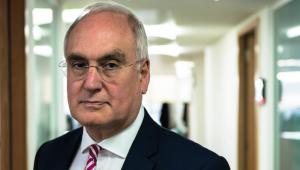In an examination of early education, the watchdog said that services had “never been stronger”, with 85% of pre-school settings now judged good or outstanding.
In total, the Early Years Annual Report 2015 stated that 84% of childminders were rated good or outstanding, as were 87% of private, voluntary and independent nurseries.
As a result, young children were being better prepared for school. Since 2013, there had been an eight percentage point increase in the proportion of children reaching a good level of development at the end of their reception year, to 60%.
However, the report found that while poorer children’s development continued to rise in line with their classmates, the attainment gap compared to the better off had not narrowed. In the 2014 school year, the proportion of children eligible for free schools reaching the ‘good level of development’ was 18.9 percentage points lower than their peers, a level virtually unchanged from 2013 (19 points) and only slightly lower than 2007 (21.1 points).
Publishing the report, Ofsted chief inspector Sir Michael Wilshaw highlighted that around 113,000 of all two-year-olds eligible for 15 hours of free early education had not taken up their place in any type of setting. This was equivalent to 42% of total eligibility.
“There can be no doubt that the quality of early years provision is better now than at any point in Ofsted’s history. But we know it is the poorest children who have the most to gain if they are being well taught before they reach statutory school age – and the most to lose if they are not,” he stated.
“So we need to incentivise schools to take more disadvantaged two-year-olds and to work with other early years providers in their local area. We also need to do much more to encourage the most disadvantaged parents to take up the funded places scheme for two-year-olds, which is currently not reaching anywhere near enough children.”
Wilshaw called on health visitors to take the lead on providing information about early years to new parents.
“Health visitors already have a particular responsibility to help the poorest families and from September they will be moving under local authority control.
“This is the ideal opportunity to make sure every parent whose child is eligible for a funded place knows about this and is being encouraged to start their child in early education, in a school wherever possible.”
Imelda Redmond, chief executive of the charity 4Children, said the attainment gap between richer and poorer children remains “worryingly wide”.
“We know that as children progress through primary school into secondary it is very difficult to close that gap. If we are serious about tackling social mobility we must as a sector work together to ensure that children leave the foundation years to start year 1 with very best of experiences and having achieved ‘a good level of development’.”
Christine Blower, general secretary of the National Union of Teachers, said early years staff could not compensate for the effects of poverty entirely.
“If Sir Michael Wilshaw truly wants to see the gap between the advantaged and disadvantaged children narrowed, then the focus needs to be on getting government to stop reneging on child poverty targets and to reverse their ruthless welfare cuts,” she added.




















